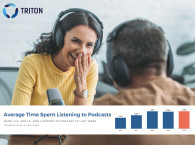
Do you remember when radio was a primary sound source on any home stereo system? When was the last time you shopped for a new radio tuner?
Chances are the last radio tuner you bought came with your car or integrated receiver amplifier. Nevertheless, radio broadcasting is still one of the world’s most important and popular media services, mostly because it’s free, it’s easy to find something interesting to listen to, and it works.
No one talks much about radio anymore simply because as consumers we are more excited about other things (e.g., the Internet, mobile computing, and social media) and the digital music revolution forever changed the way we access music. Since the iPod appeared in 2001, followed by the successful launch of iTunes in 2002, we became accustomed to enjoying our own music collections and playlists. The concept of the media player and the media library transformed our relationships with music. Listening to the radio suddenly became something we only do while driving in the car. And, have you ever been in the car with children? They listen to music on headphones because they don’t want to listen to “our” radio.
The funny thing is even local radio is globally available. Most radio stations stream their programs over the Internet. Also, the concept of “doing” radio is popularized by “podcasting,” which doesn’t require a “station.” A podcast can simply be streamed or downloaded and enjoyed whenever and wherever. No wonder most popular radio shows are also available as podcasts. In fact, podcasting introduced a new generation to the concept of “creating original programming,” which shares many common production techniques with traditional radio.
All those “exciting” things happened incredibly fast, during a time when the broadcasting industry was facing its own challenges and upgrading its analog transmission technology to digital. The industry simply forgot that consumers were too busy paying attention to other things. No wonder the world vastly ignored digital radio. There was nothing wrong with radio!
Fast forward to 2014, new streaming services are steadily dethroning the successful iTunes buy-and-download model, with Pandora, Spotify, and even Apple’s own iTunes Radio capturing the market’s attention. With good broadband Internet access, most consumers are embracing streaming services, happily trading quality for convenience.
At the same time, Pandora and iTunes Radio are experimenting with news services and even National Public Radio services, offering a mix of live news and prerecorded talk shows. Very soon we could see a convergence, while music download services will have to differentiate themselves with higher quality, adopting at least lossless formats.
I sympathize with Neil Young’s Pono Music project (www.ponomusic.com), which offers free lossless audio codec (FLAC) formats as standard, from CD quality (44.1 kHz/16 bit) to high resolution recordings at 192 kHz/24 bit. The question is, how many consumers are willing to “buy” their music all over again now that they can listen to whatever they want whenever they want?
We understand and support high-resolution formats for production. On the distribution side of things, I’m afraid the market that is willing to pay for quality will remain about the same size as vinyl. But there are lessons to be learned with the music industry’s recent changes. And, we should not discard radio.







